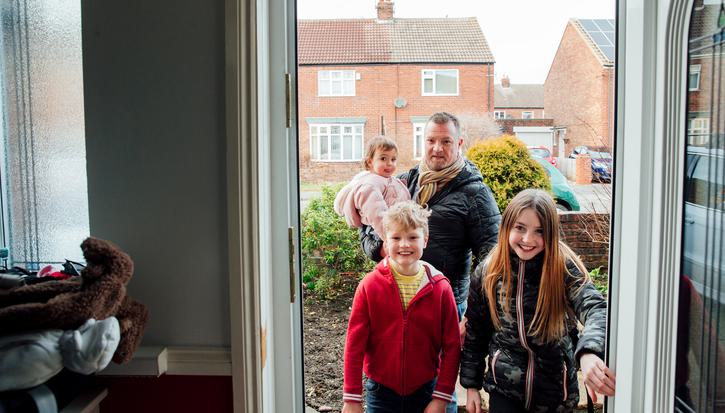Making inclusive growth work for Scotland
Article
Inclusive growth has become an increasingly prominent buzzword in Scotland, gaining prominence among policymakers at all levels of government. Since 2015, it has been central to plans for Scotland’s economic development.
But what does it mean, what does it look like, and – most importantly – how can we ensure that is translated from a promising theory into meaningful change for people and communities?
In a new report published by Scotland's Centre for Regional Inclusive Growth, we explore these questions, to find tangible lessons for policymakers and practitioners across Scotland.

What is inclusive growth?
The Scottish Government defines inclusive growth as: ‘growth that combines increased prosperity with greater equity; that creates opportunities for all; and distributes the dividends of increased prosperity fairly’.
Where previous approaches to economic development have prioritised any growth, inclusive growth asks new questions about which people and places stand to benefit from growth – as well as those excluded from its benefits. Importantly, it views social and economic interventions as equal partners.
Rather than relying on ‘post-growth’ redistributive measures to correct for inequalities produced by a particular economic model, inclusive growth looks to make those economic systems stronger and more inclusive by design. It recognises that a fairer economy is a stronger economy.
As part of this, its goal is to deliver a new model in which more people have a meaningful stake in the economy, and prosperity is more broadly shared. As we heard through this research, however, ‘in the real world it’s not called inclusive growth.’ Instead, it can be about local people coming together to create a shared vision for the place they live in, and leading efforts to realise it.
What does inclusive growth look like in practice?
We explored examples of inclusive growth in practice, drawing lessons for policymakers and practitioners across Scotland. These drew lessons from long-standing initiatives and new local level innovation, as the stories of two of the case studies we feature – from the Clyde Gateway project and Midsteeple Quarter in Dumfries – demonstrate.
Midsteeple Quarter
The Midsteeple quarter is a community-owned initiative in Dumfries developing a set of buildings on the high street into a work-live quarter, to repopulate the high street and create a vibrant mixed economy.
Much of the property on the high street had long sat empty as retail moved out and property often fell into disrepair under the ownership of ‘faceless’ absentee landlords. Discussions turned to community ownership as the solution, putting assets and decision-making in the hands of local people, for the benefit of the community.
Through debate and collaboration, the central objective of the project became bringing high street property back into use, to provide housing for local people and space for people to work and meet.
Clyde Gateway project
The Clyde Gateway project is Scotland’s largest regeneration project, running for over 20 years in the East End of Glasgow. The project has looked to strengthen the position of the local workforce through skills, training, and employability support, and to strengthen the position of potential employers to provide routes into good work for local people experiencing long-term unemployment. Through partnering with the NHS as the largest local employer, the project has worked to create good quality long-term employment prospects for people who have been out of the labour market for some time.
This work has understood the relationship between good work and good health as a foundation for economic growth that local people can share in.
What are the lessons for policymakers across Scotland?
Drawing from the case studies explored through the report, we also explored key lessons for policymakers and practitioners looking to deliver inclusive growth on the ground.
Measuring what matters
While identifying and agreeing broad criteria for inclusive growth was relatively straightforward in the local case studies we explored, the challenge often came in the ‘how’. There were clear tensions when it came to measuring progress towards agreed big-picture goals. Quantifying impact and improving access to local data was also a concern shared across all the case studies we evaluated.
Language and indicators
A lack of shared language had proved a challenge to people working on the ground, while inclusive growth is in the process of translation from a theoretical approach to a tangible reality. This was clearest in a lack of confidence policymakers and practitioners felt in setting clear and tangible outcomes against which to measure progress.
Scaling challenges
Scaling up local successes to trace their contributions to national outcomes was consistently viewed as a challenge, with those working on delivering inclusive growth unsure where their work fit into a broader picture. Local transformation was the driving motivation across these case studies, but it was less clear whether or how this work might be driving a new economic model at the national level.
Focussing on people as well as place
Throughout the entirety of our research, we observed a significant shift toward place-based policymaking in Scotland. However, policymakers must be attuned to the fact that realising inclusive growth will require attention not just to where economic growth is supported, but to who within those places has opportunity to contribute to and benefit from that growth.
How can the delivery of inclusive growth in Scotland progress going forward?
Relationships with local communities were critical to the success of the full range of projects explored. We found that by combining new ambition and local expertise, community ownership sparks innovation that drives business growth and diversification, creates good new jobs, and gives local people a meaningful stake in their local economy and their community.
Nationally, an inclusive growth approach needs to be embedded in wider economic policy – evolving from a buzzword used by high-level policymakers into a lens that shapes local economic development in places across Scotland. For example, city region deals offer important potential where an inclusive growth approach can recognise the value of prioritising routes into new education and training opportunities for economically disadvantaged groups.
Over this parliament, inclusive growth can be realised through local strategies like community wealth building approaches, in which local decision makers can use procurement and spending practices, and their land and assets, to reorientate local economic models towards shared prosperity. Inclusive growth also has a critical role to play as an approach to the day-to-day economic development that could serve as the foundation of the Scottish government’s ambitions to realise a ‘wellbeing economy’.
To make inclusive growth a reality, it will be critical that policymakers and practitioners take a holistic approach to understanding the reality of disadvantage in Scotland as its experienced by different places, and different groups of people. Sharing examples of inclusive growth in practice and learning lessons from local innovations has an important role to play in translating the theory into practice.
Read the full report published by Scotland's Centre for Regional Inclusive Growth here.
Related items

The homes that children deserve: Housing policy to support families
As the government seeks to develop a new child poverty strategy, it will need to grapple with housing – the single largest cost faced by families.
Powering up public support for electric vehicles
Tackling greenhouse gas emissions will only work if public support for action remains strong. That means ensuring tangible improvements in people’s lives and heading off any brewing backlash.
Assessing the economy
Over the past few days and weeks, there has been lots of rather histrionic commentary about the UK’s economic situation as if the budget has created an economic disaster from which we’ll never recover.